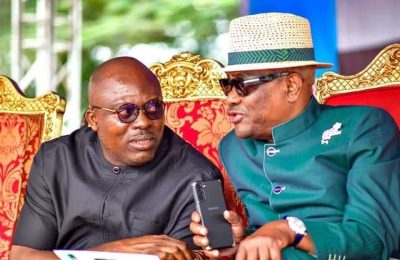A review of Professor Oyeronke Olademo’s book, Women in Yoruba Religions by Professor Babatunji Abayomi Omotara.
THE 187-page book is written by a professor of comparative religious studies who has brought her wealth of knowledge and experience to bear on the promotion of clear understanding of the subject matter.
The content of the book is discussed in six different chapters, each of which was discussed in depth and ended up with a conclusion summarising the succinct points raised in the chapter.

The author tries as much as possible to minimise the use of technical language which renders the book reader friendly, thus increasing the probability of a wider readership.
In addition, a short section at the beginning of the book dwells on the spelling of Yoruba words, which attempts to familiarise the reader with likely experience while reading the book.
An introductory section justifies the reason/need for writing the book. Yoruba’s belief in One supreme being, Olodumare under who the gods (orisa) served is firmly established. Both sections serve to prepare the mood for reading the book.

Chapter one, which she titles, ‘Women’s family, economic, social and political roles in Yorubaland,’ discusses the traditional roles of women’s involvement in economic ventures and their contributions in the family upkeep.

This is illustrated by many examples of women of substance both in preset time and in the past. Yoruba women are actively involved in commerce, farming, and various other enterprises, which confer authority on them in both political and religious endeavours.
Traditionally, gender roles have been complimentary between male and female because they occupy distinct but interdependent positions in all facets of lived experiences. She later discusses how the introduction of orthodox religion begins to disrupt the gender complementarity.
To give a better understanding to the content of the book, the author gives an elaborate description to the origin, history and culture of Yoruba people, emphasising that their history is passed from one generation to another orally through different genres which she mentions.
The dark ages of transatlantic slave trade in which the Yoruba were actively and shamefully involved is also briefly mentioned.
The author describes Yoruba culture as rooted in communal living of patrilineal extended families. Sources of support come from horticulture, trade, craft, and skill acquisition.
A systematic description of Yoruba women’s role in occupation, marriage, motherhood, and inheritance is vividly presented, portraying their indispensable contribution to complement those of their male gender.
Women’s leadership in rituals of the Yoruba religion is the title of Chapter two. The author draws a synergy between the role of women in Yoruba religion and their role in the family and society at large; and as being complimentary to that of their male counterpart.
Women who are charismatic are often the ones who assume leadership roles in Yoruba religion. Leaders are often designated to the orisa through dreams, visions, strange illness, marks on the body at birth or Ifa or Erindinlogun divination.
Total dedication to the service of the orisa is commonly required from the initiate, while the initiation process varies from one group of worshipers to another. Worship sessions often comprise of two groups of persons: the officiating priests and/ or priestesses and the congregations.
The author describes in detail, the worship sessions of the various orisa, bringing out the peculiarities, differences and similarities of each in relation to the others.
Chapter three describes Yoruba women in Christianity. Yoruba women play significant leadership role in Christian denominations, albeit by prophetic instructions and pronouncement by the women themselves, but by their congregation. The book presents examples of a few women who have succeeded in achieving such positions.
Chapter four describes the role of Yoruba women in Islam. The author promptly describes the patriarchal culture of Islam that prescribes domesticity and limited public activities for women which she compared with that of Christian denominations as seen in Chapter three, with both religions being foreign to Yoruba.
In Chapter five, the author dwells on the role of women in Yoruba religion in the diaspora. In this chapter, the author acknowledges the role of Dr Funlayo Wood-Mendezies, an American, one of the adherents of Yoruba religion who travelled to Africa for initiation.
The adoption of Yoruba name signifies their degree of commitment to the religion and their longing for a sense of belonging. In addition, the availability of African studies, especially, Obatala, Osun in Ivy league universities has also promoted Yoruba religion in America.
The religion is also practised in countries of Europe, Latin America, and North America principally as consequence of the transatlantic slave trade.
In the final chapter, titled ‘Women in the Yoruba religion and globalisation,’ the author describes the initiator of the globalisation process of Yoruba religion by Yeye Chief (Mrs) Doyin Olosun (priestess and Iyanifa) who travelled to other countries teaching Yoruba religion and initiating many devotees to Osun orisa.
She is the adopted daughter of the popular Austrian, Aduni Olorisa of Osun Osogbo (Iya Osun). Her globalisation effort is said to begin 1993 in Portugal where many were initiated and mentored. Improvision of rivers are made to symbolise the Osun River, as it is often believed that ‘all rivers are Osun.’
The author tries to bring out the difficulty in separating region and globalisation and finally posits that globalisation has helped to promote religion through its multifaceted nature, of which Yoruba religion is no exception.
Professor Oyeronke Olademo has indeed brought her wealth of knowledge and experience to bear in writing this book. She made use of all available resources; literature, qualitative research methods and other approved data collection methods to embellish her writing.
She included a section for further readings on various aspects of the subject matter to those who may wish to acquire more detailed information.
Therefore, this book will be of great value to students and scholars of Comparative religious studies, lovers of comparative religion and anyone interested in the role of women in the development of religion and in this regard. I recommend the book to all and sundry.
READ ALSO FROM NIGERIAN TRIBUNE








